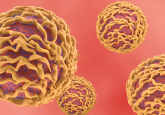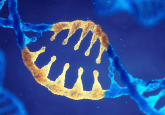CRISPR/Cas9 could be utilized as a cardioprotective strategy following heart attack

A mouse model study has shown that gene editing could be a promising approach to treating tissue damage following a heart attack.
Researchers at UT Southwestern Medical Center (TX, USA) have shown that CRISPR/Cas9 gene editing could be employed as a cardioprotective strategy for patients with heart disease. They modified calcium calmodulin-dependent protein kinase IIδ (CaMKIIδ), a key gene involved in cardiac disease, to prevent the overactivation of the CaMKIIδ protein and mitigate damage following a heart attack.
Recent studies have shown that overactivation triggered by the oxidation of two methionine amino acids in CaMKIIδ is linked to cardiac tissue damage. The team proposed that tissue damage following a heart attack could be avoided if another amino acid replaced methionine, preventing oxidation and overactivation of CaMKIIδ.
The researchers conducted a series of studies with human cardiomyocytes in petri dishes, including a study to determine the longevity of the edited cells in low-oxygen conditions. The researchers discovered that the edited heart cells were more resistant to damage and outlived the unedited cells.
Utilizing a mouse model, the effects of editing CaMKIIδ were studied by depriving the mice of oxygen to induce a heart attack. A viral vector was then utilized to deliver the CRISPR/Cas9 editing components to the heart of the mice. The team found that mice in the control group, who did not undergo gene editing, deteriorated over time in contrast to the study group who appeared to recover cardiac function with improved healing and better tissue recovery. These mice had an almost indistinguishable cardiac function from before their heart attack and no negative side effects appeared almost a year after the treatment. Additionally, the edited CaMKIIδ remained isolated to the heart.
Rhonda Bassel-Duby, the co-leader of the study, explained “rather than targeting a genetic mutation, we essentially modified a normal gene to make sure it wouldn’t become harmfully overactive. It’s a new way of using CRISPR/Cas9 gene editing.”
As this study was conducted in mice, the team will be looking to investigate the efficacy and safety of this approach in humans. If proven to be effective, this could transform the way heart attacks are treated. The team is also hoping to build on their findings by examining whether non-viral delivery methods can be employed for the gene editing system.





